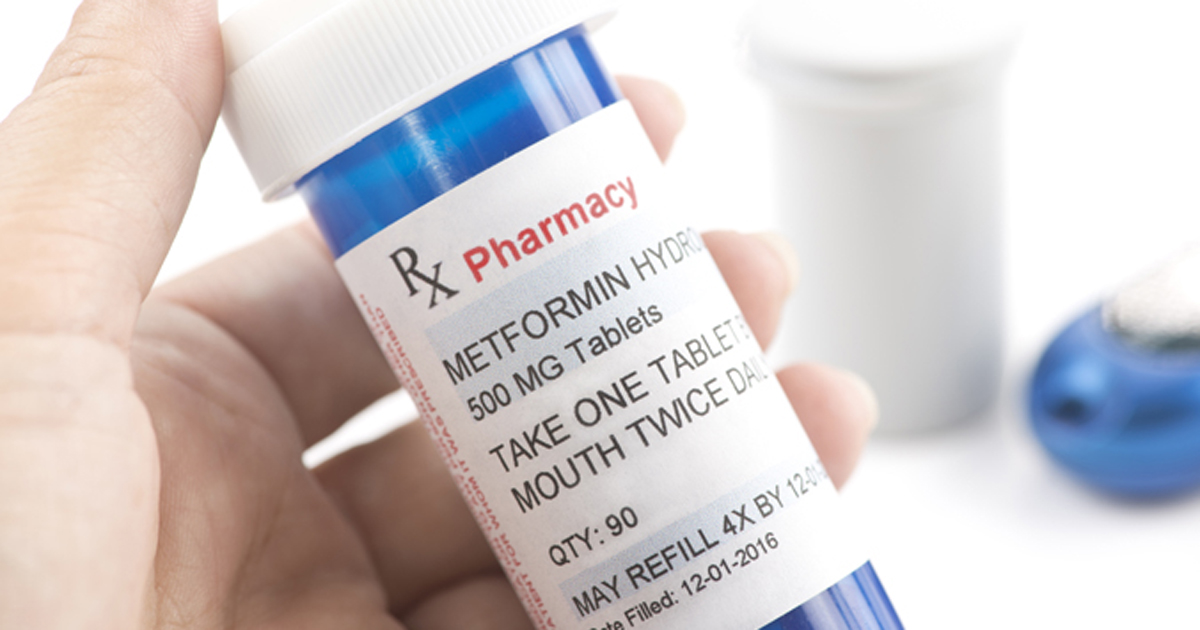Metabolic effects of glucocorticoids reversed with metformin

Adults with inflammatory disease prescribed glucocorticoid therapy experienced an improvement in several metabolic parameters after adding metformin therapy for 12 weeks compared with similar adults assigned placebo, according to findings from a phase 2 study published in The Lancet Diabetes & Endocrinology.
“Metformin treatment could alleviate some of the metabolic adverse effects of glucocorticoids, such as glucose parameters, liver function, lipid levels and atherosclerosis, as well as thrombosis and bone markers,” Marta Korbonits, MD, PhD, professor of endocrinology and metabolism and honorary consultant in endocrinology at Barts and the London School of Medicine, Queen Mary University of London, United Kingdom, told Healio. “It also reduced the occurrence of pneumonia and moderate to severe infections and the rate of hospitalization among this fragile patient group. Furthermore, disease activity of the underlying condition has also improved.”
In a proof-of-concept study across four U.K. hospitals, Korbonits and colleagues analyzed data from 53 adults without diabetes with an inflammatory disease treated with continuous prednisolone, defined as at least 20 mg per day for at least 4 weeks. Between July 2012 and January 2014, researchers randomly assigned participants metformin (n = 26; mean age, 47 years; 54% women; 46% white) or placebo (n = 27; mean age, 45 years; 56% women; 63% white) for 12 weeks, stratified according to age and BMI. Metformin and placebo were administered orally for 12 weeks in escalating doses: 850 mg per day for the first 5 days, 850 mg twice a day for the next 5 days, followed by 850 mg three times a day. Participants continued with at least 10 mg per day of prednisolone during the study period, or its cumulative dose-equivalent (1,860 mg prednisolone equivalent in the metformin group and 1,770 mg in the placebo group). Primary outcome was the between-group difference in visceral-to-subcutaneous fat area ratio during 12 weeks, assessed by CT scan. Secondary outcomes were changes in metabolic, bone, cardiovascular and inflammatory parameters.
Reversing metabolic effects

At 12 weeks, researchers did not observe changes in visceral-to-subcutaneous fat area ratio between the treatment groups. However, participants in the metformin group experienced a reduction in truncal subcutaneous fat compared with the placebo group (–3,835 mm²; 95% CI, –6,781 to –888).
Improvements in markers of carbohydrate, lipid, liver and bone metabolism were observed in the metformin group compared with the placebo group, according to the researchers.
Additionally, those in the metformin group showed improved fibrinolysis, carotid intima-media thickness, inflammatory parameters and clinical markers of disease activity.
“Although glucocorticoid effects on adipose functionality are insufficiently known, our data suggest a multisystem metabolic advantage with glucocorticoid plus metformin coadministration,” the researchers wrote. “The AMP-activated protein kinase pathway might represent one of the mediators of glucocorticoid and metformin interaction. Metformin might interact with glucocorticoid metabolism via 11-beta-hydroxysteroid dehydrogenase-1, although this interaction might not have a role in patients with supraphysiological doses of synthetic glucocorticoid treatment.”
The researchers also noted that participants in the metformin group were less likely to experience pneumonia (1 vs. 7; P = .01), moderate to severe infections (2 vs. 11; P = .001) and all-cause hospital admissions due to adverse events (1 vs. 9; P = .001). Those assigned metformin were more likely to report diarrhea compared with placebo (18 vs. 8; P = .01).
“If confirmed in larger studies with hard endpoints, metformin could be routinely prescribed for patients starting glucocorticoid therapy,” Korbonits said.
A ‘complex interaction’
In commentary accompanying the study, Martin Reincke, MD, of Klinikum der Universität in Munich, called the study design a “radically new avenue to minimize metabolic side effects of glucocorticoid treatment.”
“The stunning efficacy of metformin on these surrogate parameters might call for immediate action: If metformin is capable of reversing the side effects of glucocorticoids, why not prophylactically treat every patient exposed to excess glucocorticoids with this drug?” Reincke wrote. “Although this proposition might be a feasible and economic approach, several caveats have to be considered.”
Reincke wrote that the study’s duration was short and not powered to investigate meaningful endpoints, such as CV events and osteoporotic fractures, and that future studies must demonstrate metformin is not an “ambiguous agent” interfering with the anti-inflammatory and immunosuppressive effects of glucocorticoids.
“The significant reduction in infection and pneumonia incidence might indicate a complex interaction with the immune system,” Reincke wrote. “Until further evidence is available, doctors might consider metformin for patients at high risk for glucocorticoid side effects on an individual basis and with compassionate use.” – by Regina Schaffer
For more information:
Marta Korbonits, MD, PhD, can be reached at Endocrinology, Charterhouse Square, London EC1M 6BQ, United Kingdom; email: m.korbonits@qmul.ac.uk.
Disclosures: Merck Serono and Delpharma provided the study drug and placebo. Korbonits reports she has received grant support from Merck Serono and consultant fees from Novo Nordisk. Reincke reports no relevant financial disclosures. Please see the study for all other authors’ relevant financial disclosures.

